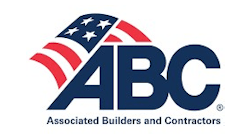“A boom over the last few years created a lot of fat,” Paul Hendrix, equipment-pricing analyst for IronPlanet, muses. “People were drunk on success and profits and the amount of work. The hangover is about to set in.”
He believes it will take “a creative company to pull through” the economic crisis. “Equipment users are facing challenges.” To help meet them, Hendrix suggests consulting an accountant for guidance in making what is a unique, personal decision for each business. Despite the individuality of each company decision, some universal truths remain. “You need to achieve balance. Maintain liquidity, flexibility and creativity, but don’t over-extend. Don’t go into debt if you’re unsure of a sustainable work level.”
Balance plays a key role in managing what Greg Kittle, vice president of corporate purchasing for William Charles Construction, calls the “trough and peak.” William Charles Construction, based in Rockford, IL, is a large, diverse company with divisions in real estate, waste, and energy.
While the current economy qualifies as a trough, he advises heeding the lesson of the economic downturn: plan for the peak as well as the trough. “This is a time to rationalize your business plan. Will it put you ahead in a good economy? Can you grow again? Ideally, that’s what you want. “It’s all about managing risk. It’s not easy, but you can’t have a high-return, no-risk business.”
Cost cutting is a necessity, Kittle contends, but it should be done strategically. “You need a plan; you need a disciplined approach. Slash-and-burn is managing by numbers, not by business sense. This is a time when managers should be earning their money. Do you have the right people in place? Most contractors have lots of ways to save money by rationalizing their business.”
Cutting the Fat
A down economy may be the best time for contractors to re-evaluate their business plans. In fact, now is the time Rob Gilles, marketing manager for Bobcat Co., suggests evaluating equipment needs, streamlining fleets, and creating opportunities to save money and diversify.
Using compact equipment can save money when it comes to fuel consumption and transporting to job sites. Thanks to its size and maneuverability, compact equipment can adapt to tight spaces at job sites where other equipment isn’t viable, replacing hand labor. “Bobcat compact equipment can often replace larger, dedicated equipment by performing the same tasks,” Gilles explains.
Another way to save money is to use equipment capable of multitasking through changeable attachments. “One thing a contractor will want to keep in mind is if the machine can be used in ways that are not currently a need, but could be made more profitable or create new opportunities in the future,” Gilles says.
Bobcat offers more than 80 attachments that can be purchased or rented for a large range of applications. Attachments add versatility, opening up possibilities for additional kinds of work. “For example, if the contractor already has a Bobcat skid-steer loader in his fleet, he can more easily fit the needs of future customers by matching the right attachment to an application he may not have previously been capable of completing. A contractor could easily move from earthmoving and excavating applications into diverse applications such as snow removal or landscaping.” In addition, using attachments for short-term tasks on a job site can eliminate the need-and cost-of a larger, dedicated machine.
It starts with using the right equipment in the right application, announces Chad Bixby, hauling systems strategy development manager for Caterpillar. To do that, you have to look at the whole job in order to determine the right piece of equipment and the right attachments. “What type of material is involved: dirt, clay, or rock? What’s the density and how thick is it? How much material is involved? Are there different layers you might reuse for fill? What are the underfoot conditions? How soft the ground is determines if you want an articulated truck or a rigid frame truck for the lowest cycle times.”
In addition to what kind of material is being moved, Bixby says, it’s important to know production requirements and whether higher production or lower cost per bank cubic yard (BCY) is more important. Contract time requirements and job size are other key factors. The total job cycle distance affects such wear items as tires, engine and power train, which, in turn, affect operating and maintenance costs. Reducing cycle times decreases wear, fuel consumption, manpower, and time.
Cat’s portfolio includes a new line of hydraulic couplers for better efficiency: the 2008 fusion quick-coupler for wheel loaders and the center-lock coupler for hydraulic excavators. An exclusive design features a center-lock coupler with lifting eye that can lift pipe, for added versatility. “Fleet utilization is very important,” Bixby emphasizes.
Case Studies
When a fleet isn’t optimally utilized and the need to cut costs arises, Hendrix advises small- to medium-sized contractors to evaluate their equipment needs, not only in regards to usage, but also what equipment has money owed on it. “If [the equipment is] under-utilized, sell it and increase your flexibility. Avoid bad credit and repossession. Sell excess equipment to reduce debt.”
On the other hand, this could be a good time to pick up some great deals at bargain prices. “The natural tendency is to pull back [in this economy],” Hendrix says, “but if you think unconventionally, you can grow and expand. It’s a buyer’s market. If you’re careful about how you buy, you can save a lot of money. People have to consider it in this economy.”
Evaluate your fleet and your company’s direction. Decide if you can expand into new areas to augment revenue streams. One of Hendrix’s customers, a medium-sized residential contractor in south Florida, took a hit when the housing market bottomed out. A few years ago, he took advantage of an opportunity to do some commercial work: a strip mall, gas stations, etc. “Diversifying saved him. He created diversity to weather the bad times and managed his debt.”
That’s exactly what Darcy Wilderman, part-owner of Czar Block in Wainwright, Canada, did. Five years ago he added gravel crushing to his business services. Two years ago, he started doing it full time. Now he’s gone to double shifts during the season.
“The business has grown leaps and bounds since I took control,” he says. The staff has expanded from one employee to five seasonal employees, primarily because Wilderman diversified and is “doing different things now.” Modestly, he adds, “This industry (infrastructure) isn’t affected by the economy. In fact, the Alberta government is still spending money on it. They’re getting things done cheaper now, so there’s more work.” However, all government work is bid work, and this economy has made the bidding more competitive.
At a time when many companies are scaling back, Czar Block expanded in order to competitively bid on bigger jobs. “That’s where the money is.” To help with those bigger jobs, he purchased a new 220F loader from Volvo last April. The rugged 220F is an “uncompromising production machine for the heaviest jobs in the very toughest conditions” and features a turbocharged Volvo D12D LB E3 engine and patented lift-arm system.
What may sound like an extravagance was, in effect, a cost-saving measure. Not only are the fuel savings “substantial,” Wilderman claims, but the new Volvo “eliminated one loader for me. It takes one person to feed to the crusher and one to take the product away, but this does both jobs because it’s “˜ground-fast.'”
There’s an even more personal benefit to the new model’s cutting-edge technology. Wilderman’s brother, who suffers from a mild form of cerebral palsy, can run it, thanks to its easy steering. “It has joystick steering. He couldn’t run it without that.”
A new loader wasn’t his plan, but it was “too good a deal to pass up. I didn’t want to purchase that good or new of a machine. I was going to buy a used one from another guy who was upgrading, but he backed out because of the economy. I still needed one, so I bought a new one.” It’s already paying off. “Last year, nobody called for road work,” he recalls. “After two jobs this year, now I get called all the time.”
Technologically Advanced
According to Bixby, there can be “less financial burden to get into new equipment.” Reasons can include financing, which is typically more difficult to obtain for used equipment, dealer support, the ability to lock in operating costs with customer support agreements, and economic advantages accompanying the latest technology.
Cat technology, such as its product link, which comes standard on most machinery, saves money by connecting equipment at the work site with the shop. Data collection tracks the hours and location of each machine for a company’s preventive maintenance program. “We can even monitor fuel usage and idle time,” Bixby reveals.
Another of Cat’s money-saving technological advances is its Accugrade product for machine control and guidance for accuracy ranging from one-tenth of an inch to 1.25 inches. “Accuracy is a big cost savings; it reduces costs associated with grading and staking.” Bixby also indicates that Cat is in the final stages of cost-testing a new D7E electric drive tractor that should further reduce fuel costs and increase production.
Technology can definitely play a role in the profitability of a business, Gilles confirms. Determining the right technologies for each contractor and each application is an important step. “The right technology will make applications more efficient and more productive, providing cost savings or increased profits for the contractor.”
For contractors who have a Bobcat skid-steer or compact truck loader, the Bobcat laser-guided grader attachment quickly pays for itself by making the contractor more productive. It can achieve a grade within plus-or-minus 0.25 inch. A more accurate grade can quickly equal large savings in many ways, such as impacting how much concrete is used. In addition to providing an accurate grade, Gilles says, it is also a faster system for grading, “eliminating the need for multiple people to do it by hand as one person can efficiently complete the job with the loader and system.”
Conversely, Hendrix believes only a few classes are slightly affected by new technology. “Sure, there are advances in hydraulics, but wheel loaders, rollers-there’s not a lot of [new] technology. People aren’t thinking about fuel costs; it’s not as big a consideration as last year, so it’s not an edge in most machine categories to change their minds on buying new versus used. If they can save $30,000, that’s the primary concern.”
While the elimination of non-value-added worth, time, and equipment can help a company economize, Kittle believes that investing in technology and software provides a return that is “always value-added because it fundamentally changes how you do business.”
To Buy or not to Buy: That Is the Question
New equipment can often change the way a contractor does business. When times are tough, Hendrix suggests contractors broaden their scope to include different types of work, rather than specializing. However, “if a contractor can see a niche, he may need specialized equipment to augment special types of work.” Whether narrowing the focus or casting the net wider, he says “doing it the same old way may not work.”
When it comes to deciding whether to buy new or used, Gilles suggests making sure the features, abilities and benefits of a used machine match your need. “If a used machine does not have all the features and benefits a contractor needs, then it will not be as productive as a newer machine. In this case, a new machine would be a better investment in the long term. By purchasing a new machine, a contractor gets all the latest technology, features and benefits, and gets to customize the options to fit his business best.”
There are other considerations. New equipment is protected by warranty, but some manufacturers won’t allow the warranty to transfer. And, as Hendrix admits, buying new generally gets preferential financing often not available at auction or with other second-hand purchases.
Emissions compliance benefits from rotating out older equipment, Kittle states. “If you continuously update high-hour pieces, your ownership and depreciation are less. Safety, productivity, and fuel economy are all improved.” Uptime is typically higher on new equipment because less maintenance is usually required.
Nevertheless, Kittle cautions that product support is a cost for contractors that can be very difficult to manage. “It changes the footprint of your company. Now you need a big shop and lots of mechanics to emulate the dealer setup and infrastructure.” But because contractors can’t fully replicate what the dealer does since they’re at a disadvantage regarding training and tooling, he recommends alternatives.
There are lots of ways to buy, including lease with high residual value, and lease completely to mitigate residual value. “It moves equity forward so you’re not paying a gain on sales,” Kittle says. If you can keep rates flat or declining over the life of an asset, it can save money.
Different types of equipment-such as a 25-ton backhoe and a 300-horsepower tractor-require different life cycle approaches. “Fleet equity increases your line of credit and your ability of bonding. Bonding and finance elements help a company grow.”
Fleet management is not “just a spreadsheet,” Kittle emphasizes. “It’s a lot of hard work; it’s not glamorous.” As a corporate division business customer, William Charles Construction enjoys a close relationship with John Deere. “Look at your relationship with your dealer. You need to have an even closer relationship with your dealer and the manufacturer than ever before. Discounts are not the way to prosperity.”
Instead, find things that are costing money, like parts and rental invoices, and integrate events. “Connect your business systems to decrease the cost of business,” Kittle urges. “You’ll know if the dealer has rentals available.” An online ordering system can streamline business operations by creating electronic invoices that flow through your inventory system. “It costs less. There’s less handling time, less paper, less processing. Reduce the cost it takes to manage the relationship. You must understand not only construction work, but how dealers and manufacturers work in 3,600 markets, how finances work.”
When you buy new equipment from a Caterpillar dealer, you get the strength of the Cat network. “Leverage that,” Bixby directs. “Our dealer salesmen are all consultants. Our corporate-based team is deployed worldwide to do job-site evaluations and advise you how to use equipment, which equipment to use and show you how to use all the capabilities of the equipment.” Knowing how to fully and properly operate the equipment can make crews more efficient and cost-effective. “Training on techniques can increase productivity and reduce costs.”
Trailers (and Other Equipment) for Sale or Rent
Many variables must be taken into consideration when deciding whether to rent or buy. “The question a contractor needs to ask himself is how much the equipment will be utilized,” says Bixby. “If the contractor only has one task in mind for the equipment on a job site, then it may be better to rent the machine to tackle that task. If the machine will be sitting unused, then it is not being utilized to its fullest potential and may not be the right investment for the contractor. However, as is often the case with compact tool carriers, if the machine can perform a variety of applications, be utilized on multiple job sites and replace hand labor and quicken processes, then it would be a better long-term investment for the contractor to purchase a machine so he can get the maximum benefit from it.”
At times, renting can be more cost-effective. “Owning equipment doesn’t mean there aren’t still costs. If you own equipment, you take the depreciation only,” Hendrix points out. “With rental, you can write off the entire use without long-term debt.”
“The biggest advantage is there’s no insurance to buy if you don’t own,” Kittle notes. Maintenance costs on aging equipment can eclipse rental costs and, as he says, “you never know when an engine will fail.”
To determine where the financial chips fall, define the percentage of hours rented, leased, and owned. “If you go beyond that number,” Kittle says, “add owned or leased units. If you go under that number, add rental units.”
He advises reducing fleet size by 25% or more, using rental as a guide. It’s all part of fleet rationalization: acquisition disposal models.
Trading out less productive equipment can be as financially beneficial as buying equipment-especially if it maintains good residual value. If you have equipment to liquidate, Hendrix says to evaluate its condition objectively. You can maximize your return by repairing leaks and cosmetic damage and simply cleaning it up. “Improve its “˜curb appeal.'”
Selling at auction is an established method of liquidating excess equipment. IronPlanet is positioned to help buyers and sellers. Founded in 1999 by a venture capital group, with headquarters in Pleasanton, CA, IronPlanet is the world’s leading online marketplace for used heavy equipment, with more than 500,000 registered bidders and earning $337 million in gross annual auction sales last year.
The auction company “converts assets,” as Hendrix describes it. Because auctions are counter-cyclical to economic ups and downs, he says business is very good right now, but the ease of an online auction can be credited with part of the success. Because the equipment remains on the seller’s lot until the sale is completed, there’s no shipping to an auction site, no auction site vandalism, no fuel charge. The equipment remains securely in the seller’s control.
Buyer protection is also in place. IronPlanet conducts an in-depth inspection, taking 100 detailed photos of the machinery. “Our level of detail provides comfort for bidders who don’t get to see it in person,” Hendrix believes. If that’s not enough, there’s the IronClad Assurance guarantee that the report is accurate. “It reduces a buyer’s risk. We will repair or buy back the machine if it’s different from what’s represented.”
Auctions are held almost every week, most without reserve. Invitation-only wholesale auctions, dealer-only inventory sales and one-owner liquidation sales can be arranged. Owner auctions can be scheduled. Hendrix says they’re suitable for specialized machines that “don’t belong in regular auctions. They’re usually expensive machines that have a small community of buyers: a large tub grinder or chipper for half a million dollars.”
IronPlanet offers an alternative, Hendrix says, with the goal of making the experience “pleasant and easy for the buyer and the seller.” Lower commission rates, a lot of traffic on auction days (as many as 19,000 viewers for one July auction) and higher sale prices are attracting contractors who need to realign fleets and dealers with excess equipment. “Small- to medium-size contractors can save 25%-40% on slightly used equipment,” he claims.
The downside is that since last November, most equipment prices at auction have dropped 40%, which “hurts the guys who bought new last year if they need to liquidate. It’s a problem for fleet owners if they need to get out because they’re upside down.”
The Cut Line
There are, however, areas where contractors should not make sacrifices for the sake of saving money. “Safety and maintenance are two of these areas,” Gilles says. Maintenance, he insists, is important to the machinery and to business. If routine maintenance isn’t conducted regularly, there’s greater risk of damage to machine components-and that translates to expensive downtime and even more expensive repairs or replacement.
“Properly maintained machines will be more productive and provide a better long-term investment. If a machine isn’t maintained properly, the contractor runs greater risk of a breakdown and if the machine isn’t working, it cannot be making money.”
Safety is another area where contractors shouldn’t scrimp. “Properly trained employees will work [more safely] and help prevent job-site accidents and injuries, which could lead to delayed or stopped work,” Gilles notes.
Kittle agrees: “Never cut corners with safety!” He considers good employees a company asset worth retaining. “Your investment is defined by the quality of your employees. People are assets.” Similarly, Hendrix points out that layoffs could result in the loss of employees with special skills that enhance business. “You don’t want to lose good people. People are linked together; if you lose one, you risk losing continuity on your crews. That can put safety and productivity at risk.”
Whether or not it affects your productivity, compliance is an area where it’s “hard to cut corners,” Kittle admits. “We live in a much tougher regulatory environment now, with emissions standards and things attached to stimulus bills. You can work smarter, though.”
In tough economic times, everyone is challenged to do more with less. “If you’re making structural changes-downsizing-they should be systematic,” Kittle insists. “There will be peaks again; you don’t want to eliminate structural components or you won’t be able to grow later. Plan for the peak while experiencing the trough.”
Cutting costs is like “trying to stop the bleeding,” Hendricks says, “but you must look at the long-term return on investment.” Spend money where it’s warranted and mandatory, Kittle advises. Examine your needs and match the right equipment and practices (rent, lease, own) to them. Find the equipment that will make you more productive and allow your business to continue being profitable.









